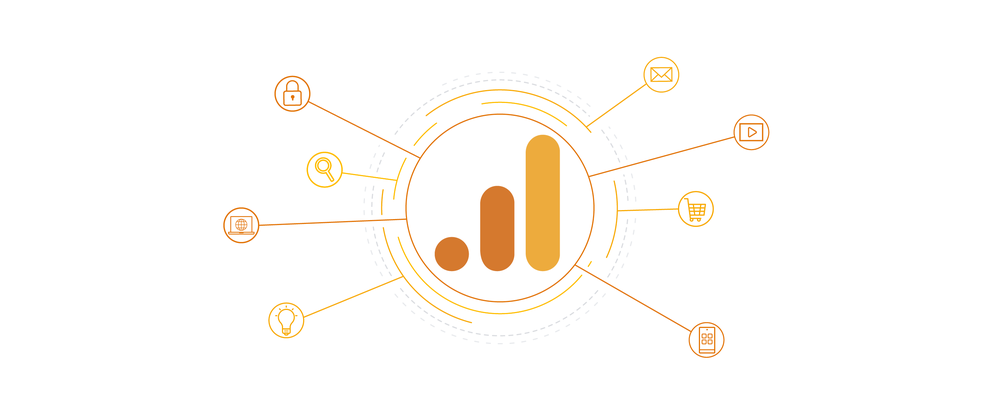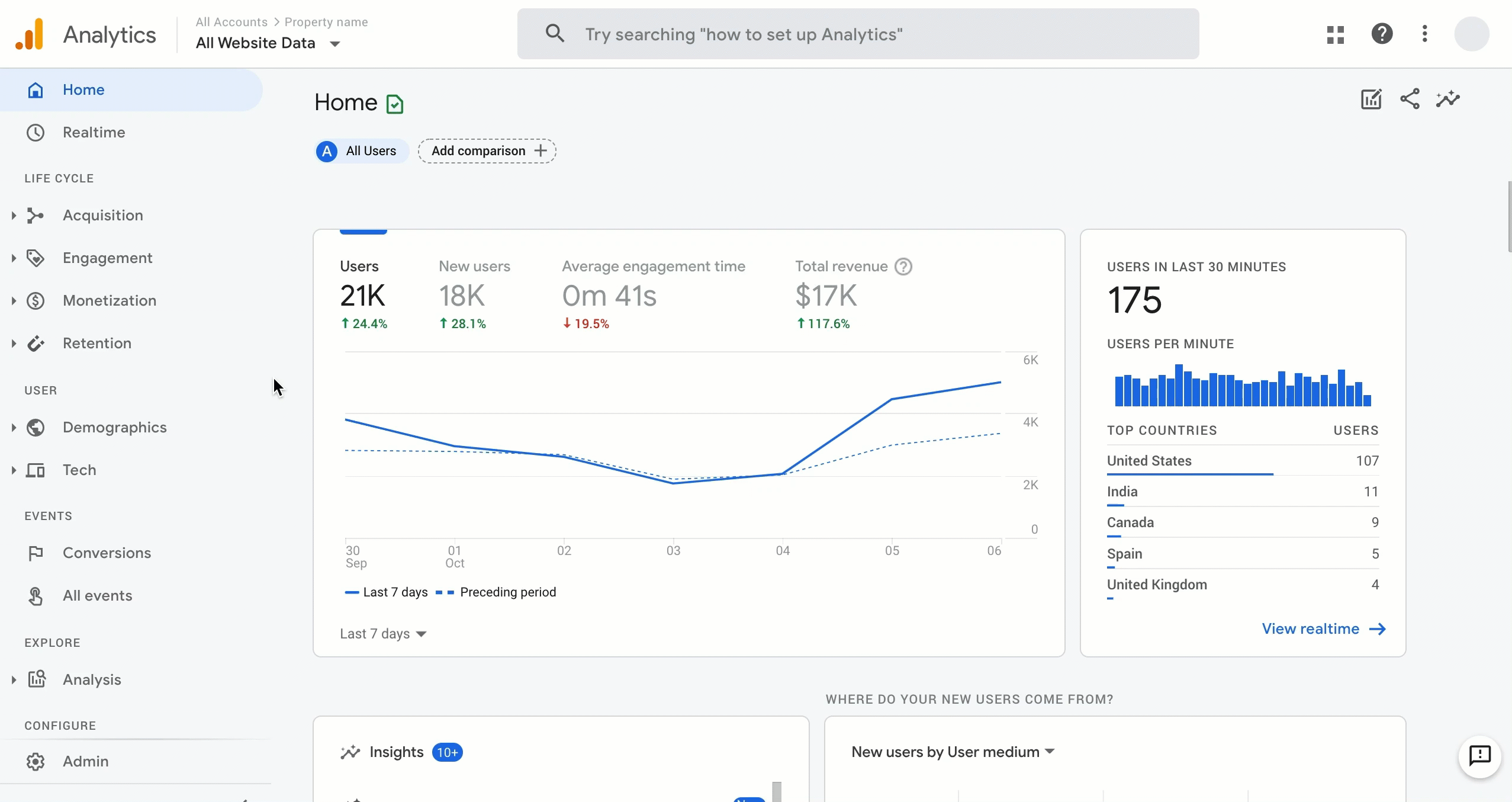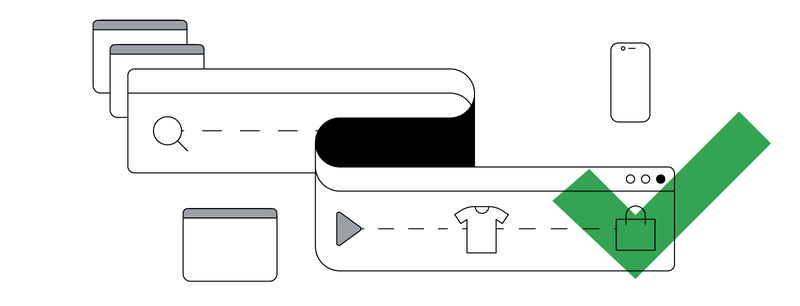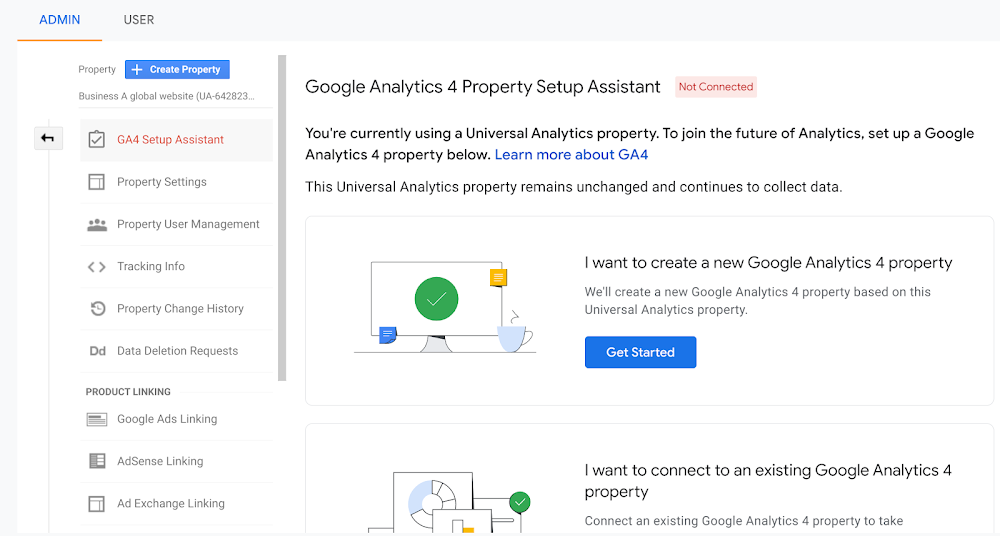As an eCommerce store owner or marketer, data should always be at the forefront of your decision making. Google Analytics has set the standard for website data collection for years now, and has taken it a step further with their newest property type, which they’re calling Google Analytics 4.
An important thing to note is that Universal Analytics, which has been the default for a while, isn’t going anywhere.
In fact, Google has made it so that you can track data with both Universal Analytics and Google Analytics 4 simultaneously whether you already had an account set up or you’re setting up a brand new account.
There’s certainly a lot to unpack in Google Analytics 4, as it offers more in-depth reporting and much more. So let’s dive in!
What’s New in Google Analytics 4

This new iteration of Google Analytics was developed with a couple of core goals in mind:
- Helping digital marketers make better ad spend decisions that improve ROI
- Keeping in line with a more privacy-centric online browsing experience
The main way Google is achieving these goals is with the help of powerful machine learning that not only provides insights into customer journeys between devices and platforms, but also presents predictive metrics that can shed light on potential areas of growth and other valuable insights.
More In Depth Reporting, Including Realtime Analytics
This is one of the more significant upgrades that Google included in GA4. A large focus has been placed on customer journeys and customer lifetime value.
By prioritizing these customer-centric data points, Google has opened up an entirely new range of data that aims to help marketers make more informed decisions.

With these reports, you can dive deeper into how your customers are interacting with your business, where they are spending the most time, which devices they are using to find you, and much more.
Additionally, you’re able to view site activity as it happens with Realtime Reports. This reporting presents all new users in the last 30 minutes, and tracks their activity on the site.
This can be especially useful for flash sales and other short-term promotions on your site.
Predictive Metrics & Audiences
Thanks to Google’s powerful machine learning, marketers can gain deeper perspective into a few main aspects of their performance:
- Purchase Probability: The probability that a user who was active in the last 28 days will log a specific conversion event within the next 7 days.
- Churn Probability: The probability that a user who was active on your app or site within the last 7 days will not be active within the next 7 days.
- Revenue Prediction: The revenue expected from all purchase conversions within the next 28 days from a user who was active in the last 28 days.
Using these metrics, you’re able to create, monitor and target unique audiences that weren’t possible before.
What’s more, you can customize these audiences to certain filtered criteria that can help you hyper-target segments within the audience (otherwise known as audience-ception).

What does all of this mean? Basically, Google is able to present you with a number of potential customers before they actually purchase so you can fine tune your remarketing to close the sale.
On the flip side, you’re presented with people who are more likely to “churn,” or not come back, to your site so you can scale back your ad spend towards those groups.
Code-Free Event Tracking
Google Analytics 4 comes with the ability to track a number of basic events on your site or app without the need to write additional code as long as you’re using Google’s SDK or gtag.js for tracking.
This makes it easier than ever for marketers to track important data on their site, as opposed to Universal Analytics which requires additional coding and implementation steps.
Now users of all levels can take advantage of Google’s high-end data collecting.
Designed For A Future Without Cookies
As technology and society progress together, consumer privacy has become a major priority across the board. In time this will mean less access to data that had been previously available.
Additionally, consumers are now using more devices to conduct transactions than ever before, which represents another hurdle in data collection.

(Via Think With Google)
The trick is to find ways to bridge that knowledge gap when specifics are lost and data is collected in a generic “profile” form rather than specific to each person. This is where Google’s conversion modeling will come into play.
Once again, machine learning is at the forefront of this effort. “Conversion modeling refers to the use of machine learning to quantify the impact of marketing efforts when a subset of conversions can’t be observed,” explains Philip McDonnell, Director of Product Management at Google.
This is important because the algorithm and predictive measurements can help maintain the same level of data, even without direct measurement being available.
Without this data, the overall health of a business can suffer drastically in the long term. With Google Analytics 4, marketers can still achieve their goals.
How to Set Up Google Analytics 4
Google has made it super easy to set up a property with Google Analytics 4. As previously mentioned, even if you already have Universal Analytics active you can get set up with a Google Analytics 4 as well and track using both types.
Admin users of already existing Analytics accounts can find the GA4 Setup Assistant from the Admin page of your Universal Analytics property.

From here, click Get Started to continue, and follow these steps as laid out by Google.
If you are setting up an entirely new site with a GA4 property, your process will be different. You’ll find your directions here.
Wrapping Up
In a data driven industry like eCommerce marketing, continuing consumer privacy practices can present a number of challenges.
Google Analytics 4, powered by machine learning, has been developed to bridge that gap and help bring even more data to the forefront of their reporting.
And as time goes on and we march into a continually cookie free world, it’s these innovations that will help drive the future of marketing.

